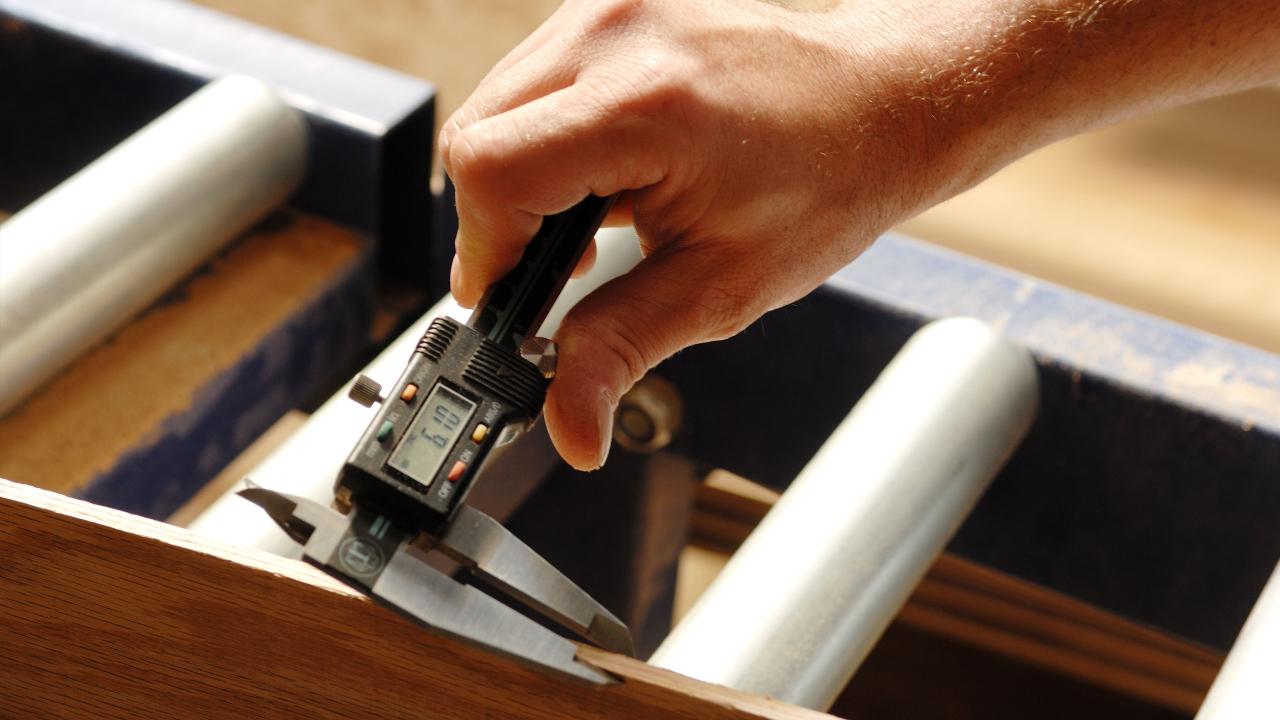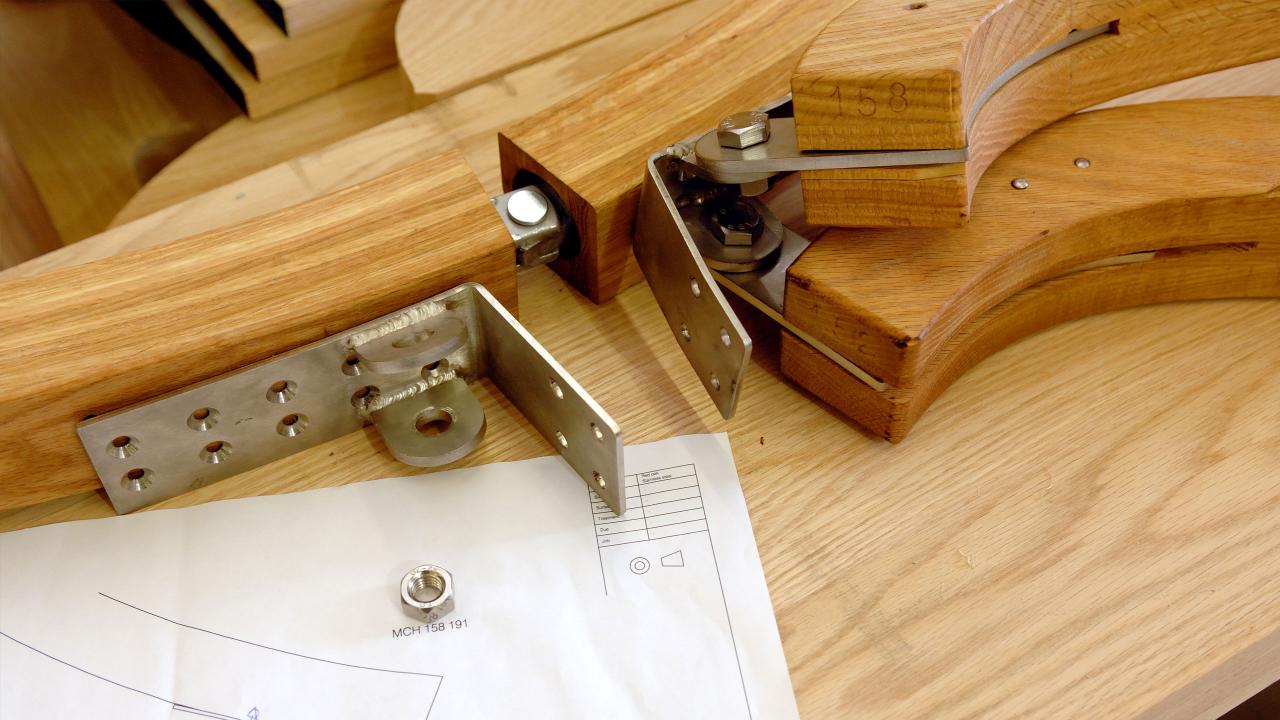Making
The architect used clever design software to come up with the forms, and the engineer then had to calculate whether these would be structurally stable. If there had to be changes in the engineering, then the architect had to rework its design – and send it back to the engineer for further calculations.
Owing to the curves and the way in which the elements of the Timber Wave came together, it was also necessary to design complicated joints, using as little steel as possible, to keep the integrity of the timber structure. As thick pieces of timber will not curve and the curves on this structure are tight, the elements had to be made from thin slices of timber (lamellae) that were curved and glued together – a well-known structural solution known as glued laminated timber, or glulam for short.
A great deal of testing during manufacture ensured that the pieces would fit together, and that the connections were as strong as calculations had suggested. The small elements were assembled into ten large pieces, which were brought to London and assembled on site in the week before the London Design Festival opened.


